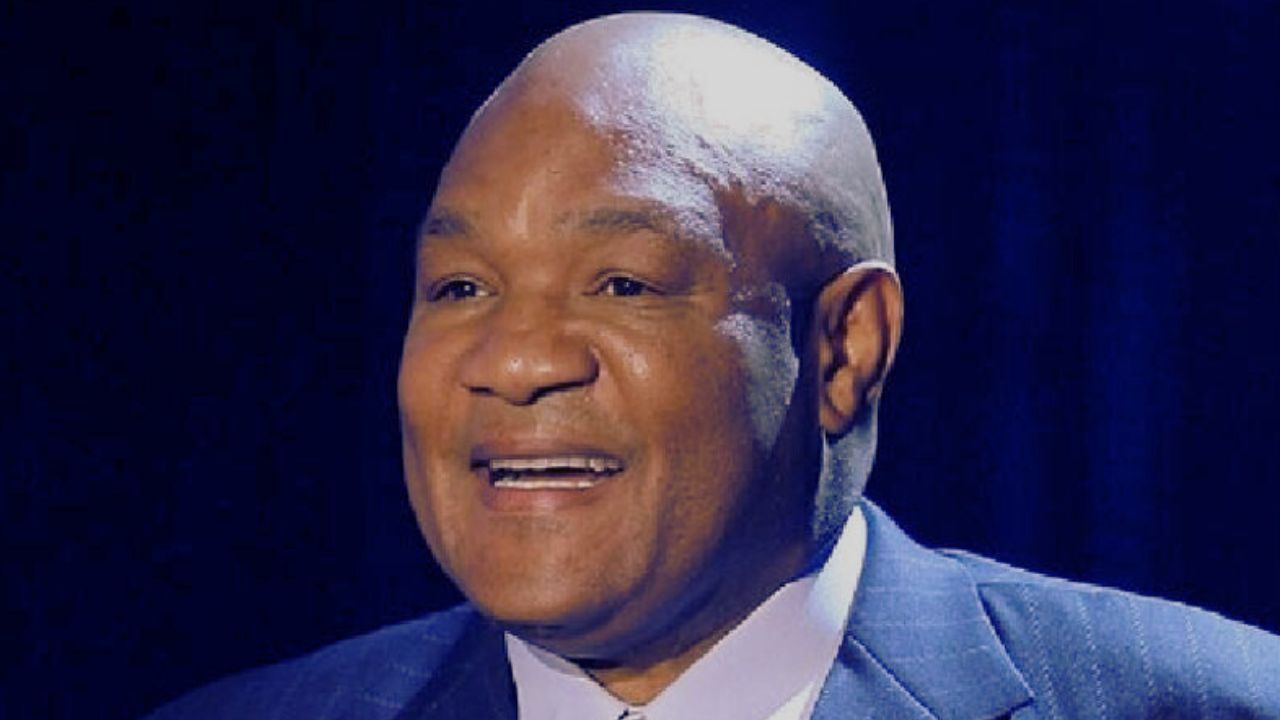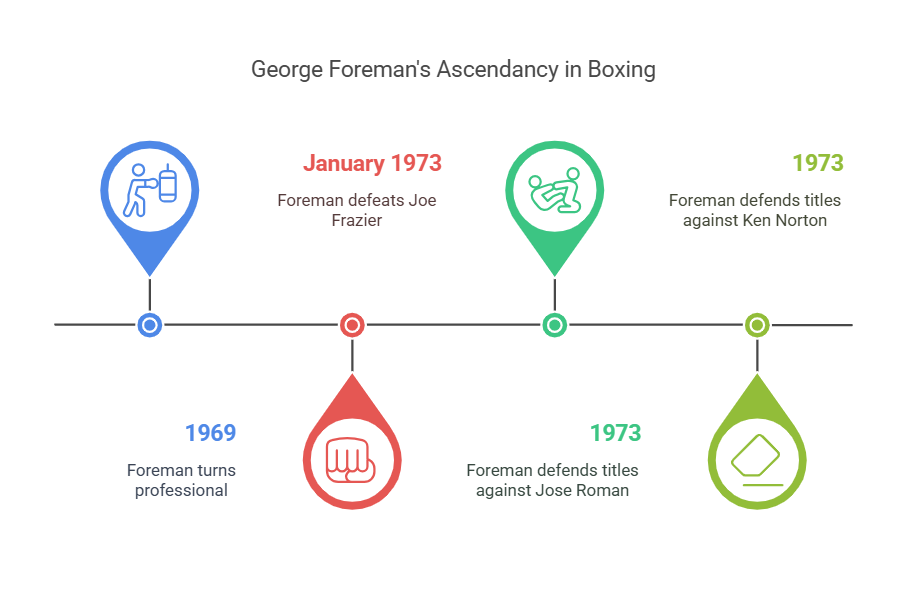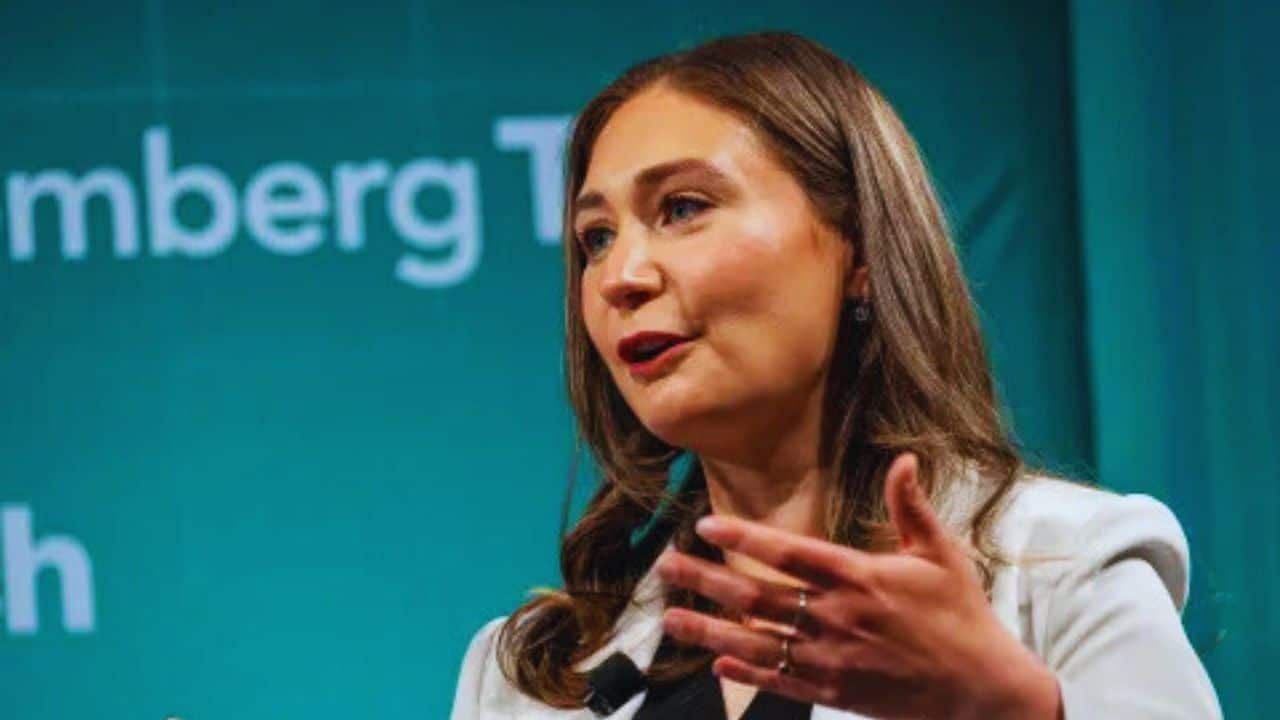George Edward Foreman Sr., a two-time world heavyweight boxing champion, Olympic gold medalist, and widely recognized entrepreneur, passed away peacefully on March 21, 2025, surrounded by his loved ones. He was 76.
The announcement was made via a verified social media post on an Instagram account dedicated to Foreman’s legacy. The message conveyed deep sorrow and respect, highlighting his life not only as a sports legend but also as a devout preacher, devoted family man, and humanitarian.
“Our hearts are broken. With profound sorrow, we announce the passing of our beloved George Edward Foreman Sr. who peacefully departed on March 21, 2025 surrounded by loved ones. A devout preacher, a devoted husband, a loving father, and a proud grand and great grandfather, he lived a life marked by unwavering faith, humility, and purpose.”
A Life Rooted in Resilience, Faith, and Redemption
Foreman’s journey from a troubled youth in Houston’s notorious Fifth Ward to a revered global figure is one of the most inspiring stories in sports history. Born on January 10, 1949, in Marshall, Texas, he grew up as one of seven siblings in poverty. His early years were marred by school dropouts, street fights, and brushes with the law.
At age 16, Foreman’s life changed when he joined the Job Corps, a U.S. government program designed to help disadvantaged youth through vocational training. It was there that he met boxing coach and mentor Doc Broaddus, who introduced him to the sport that would change his destiny.
Olympic Triumph and a Symbolic Celebration
In just his 25th amateur fight, Foreman won gold in the heavyweight boxing division at the 1968 Summer Olympics in Mexico City. After his victory over Soviet fighter Jonas Čepulis, Foreman famously waved a small American flag in celebration. This gesture stood in stark contrast to the powerful Black Power salute raised by fellow Black athletes Tommie Smith and John Carlos just ten days earlier.
The gesture drew criticism from some who viewed it as politically passive. Years later, Foreman clarified the symbolism behind it:
“When I walked into the Olympic Village, I saw a couple of athletes who looked like me. I went to speak to them, but they couldn’t speak English. For the first time, I realized that the only thing that could identify us was our nation’s colors. I waved the flag so they knew I was American.”
Despite backlash when he returned to the U.S., Foreman stood by his action. The moment became one of quiet patriotism, rooted in identity rather than protest.
Rise to the Top of Professional Boxing
Foreman turned professional in 1969 and quickly built an undefeated record. Just four years later, in January 1973, he stunned the world by defeating then-unbeaten heavyweight champion Joe Frazier in Kingston, Jamaica. Despite being seen as the underdog, Foreman knocked Frazier down six times within two rounds, capturing the WBA and WBC heavyweight titles. This victory established him as one of the most fearsome punchers in boxing history.
Foreman successfully defended his titles twice, first against Puerto Rico’s Jose Roman—whom he knocked out in just 50 seconds—and then against Ken Norton, who had recently beaten Muhammad Ali. Norton also fell quickly, losing in two rounds. These dominant performances set the stage for one of the most iconic matches in sports history.
“Rumble in the Jungle”: The Defining Fight
On October 30, 1974, Foreman faced Muhammad Ali in Kinshasa, Zaire (now the Democratic Republic of Congo), in a historic bout known as the “Rumble in the Jungle.” The fight was about more than boxing—it carried cultural and political weight, symbolizing African identity, Black excellence, and global unity.
Both fighters were guaranteed $5 million, an unprecedented sum at the time. Ali employed a then-controversial tactic—later dubbed the “rope-a-dope”—where he absorbed Foreman’s powerful punches while leaning against the ropes, waiting for his opponent to tire. In the eighth round, Ali struck decisively, knocking Foreman out for the first and only time in his 28-year career.
Foreman later described the moment as transformative:
“I thought this would be the easiest $5 million I was going to pick up… I hit him hard in the third round, and he looked at me as if to say, ‘I’m not gonna take it!’ He hit me with a quick one-two, knocked me down, and my whole life changed.”
Though devastated, Foreman would later call Muhammad Ali his best friend, underscoring the mutual respect that grew between them after their legendary encounter.
From Ring to Pulpit
In 1977, after losing to Jimmy Young in what was only his second professional defeat, Foreman experienced a near-death experience in the locker room. He claimed to have encountered God during a vision that changed the trajectory of his life. He retired from boxing shortly afterward and became an ordained Christian minister.
He founded the George Foreman Youth and Community Center in Houston, focused on offering guidance, mentorship, and safe spaces for at-risk youth. For the next decade, Foreman preached full-time, delivering sermons and dedicating himself to spiritual service.
The Historic Comeback
In 1987, at the age of 38, Foreman shocked the world by returning to professional boxing. Despite being visibly out of shape and considered past his prime, he steadily worked his way back into top contention.
In 1991, he faced reigning champion Evander Holyfield in a highly publicized fight dubbed “The Battle of the Ages.” Though Foreman lost by unanimous decision, he earned widespread respect for going the distance against a younger and faster opponent.
Three years later, in 1994, at the age of 45, Foreman made history by knocking out Michael Moorer to reclaim the WBA and IBF heavyweight titles. This made him the oldest heavyweight champion in boxing history—a record that still stands.
“The second time, I made a point of believing it,” he recalled. “The first time, it didn’t feel real. But in ’94, I knew I belonged in that ring.”
Foreman finally retired from boxing in 1997 with a professional record of 76 wins (68 by knockout) and only five losses.
Business Success and the George Foreman Grill
Outside the ring, Foreman found extraordinary success as a businessman. In 1994, the “George Foreman Lean Mean Fat-Reducing Grilling Machine” launched and became a global sensation. The countertop grill appealed to health-conscious consumers, and its simplicity made it a household favorite. Over 100 million units were sold worldwide.
Foreman reportedly earned over $200 million from the grill’s success—far surpassing his total boxing earnings. His name became synonymous with healthy living and positive branding, marking one of the most successful athlete-to-entrepreneur transitions in history.
Personal Life and Family
George Foreman was a deeply family-oriented man. He married Mary Joan Martelly in 1985, and together they raised a large blended family. Foreman had 12 children, including five sons, all named George: George Jr., George III (“Monk”), George IV (“Big Wheel”), George V (“Red”), and George VI (“Little George”).
Foreman’s parenting philosophy reflected his faith and humor. He once said the repeated names ensured “they always remember who their daddy is.”
In 2019, tragedy struck the family when his daughter Freeda, a former professional boxer, died by suicide. Foreman expressed deep sorrow over her loss, saying, “It was my first Sunday in 42 years without my Freeda.”
Later Years, Allegations, and Legacy
In 2022, Foreman was accused in two separate lawsuits of sexual abuse dating back to the 1970s. Foreman denied all allegations and maintained his innocence. In 2024, he filed a court declaration seeking dismissal of one of the suits. Legal proceedings were ongoing at the time of his death.
In 2023, Sony Pictures released a biopic titled Big George Foreman: The Miraculous Story of the Once and Future Heavyweight Champion of the World. The film chronicled his rise, fall, redemption, and second career in both boxing and business. Foreman described watching the film as an emotional experience:
“You spend your life building a wall to hide your past. Then one day, you have to tear it down and show the world what’s behind it.”
Final Goodbye
Foreman continued to preach at his Houston church until shortly before his passing. His last known public appearance was at a youth boxing event in early 2025, where he encouraged young athletes to “fight for a cause, not just for a title.”
His death marks the end of an era, but his legacy will continue to inspire generations across sports, business, and faith communities.
George Foreman: Key Facts
| Category | Details |
|---|---|
| Full Name | George Edward Foreman Sr. |
| Date of Birth | January 10, 1949 |
| Date of Death | March 21, 2025 |
| Olympic Gold Medal | 1968 (Mexico City, Heavyweight Boxing) |
| World Titles | WBA, WBC (1973); WBA, IBF (1994) |
| Professional Record | 76 Wins (68 KOs), 5 Losses |
| Business Highlight | George Foreman Grill (100M+ units sold) |
| Notable Film | Big George Foreman (2023) |
| Ministries Founded | George Foreman Youth & Community Center |
| Family | Wife: Mary Joan Martelly, 12 children |
George Foreman’s story is a remarkable tale of transformation, resilience, and redemption. From Olympic glory to heavyweight championship titles, and from pulpits to kitchen counters around the world, Foreman proved that a second act in life can be even greater than the first.
The information is collected from ESPN and Yahoo.




































